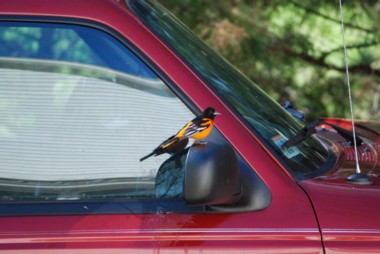Worker-owned, patron-supported: On the brink of being forced to empty its shelves, the Food For Thought Bookstore workers’ collective appealed to its supporters and raised $40,573—more than its goal of $38,000— between Nov. 16 and the end of 2013, allowing it to stay open into its 38th year.
Powering Politics
Manufacturing might not be the economic powerhouse it once was in Massachusetts, but it’s still plenty influential—particularly when it comes to state politics.
Donors from the manufacturing sector accounted for the most campaign contributions in state-level races in the 2012 election season, according to a recent report in Mother Jones magazine. MJ reporters Alex Park and Tasneem Raja used data from FollowtheMoney.org to draw a map identifying the top-donating industry in each state. They excluded donations from labor unions, law firms and nonprofit organizations, “since political giving from these entities can be associated with a variety of industries,” they wrote. In addition, the reporters wrote, “It’s important to note that many contributions are made by idividuals, and an individual donor’s industry or occupation is not necessarily connected to their giving.”
The results show interesting regional trends: the energy and health sectors, for instance, dominate the middle part of the country, while manufacturing tops the list in only one other state besides Massachusetts: Ohio.
In our region, the real estate industry topped the list in Vermont, New Hampshire and New York. Healthcare came in first in Connecticut, and finance did in Maine. In Rhode Island—which had two casino legalization questions on the 2012 ballot—the gambling industry, not surprisingly, was the largest donor.
By the Numbers:
40
That’s the percentage of 181 species of breeding birds in Massachusetts that are “in need of continued monitoring or urgent conservation action,” according to Mass Audubon’s recently released 2013 State of the Birds Report.
Among the threatened species: the Eastern meadowlark, wood thrush and purple finch.
The report identifies a range of causes of the birds’ decline, including habitat loss and “degradation,” exposure to toxic chemicals, predators (including that pet cat you insist on letting out) and climate change.
The good news: 60 percent of the species studied for the report are stable or increasing in number, including the osprey, Cooper’s hawk and Carolina wren.
The full report, including Mass Audubon’s recommendations for protecting our bird species, can be found at www.massaudubon.org.
10,819
That’s the average number of kilowatt hours of electricity used in an American house in 2013.
The figure is the lowest since 2001; the drop in consumption is due, says the Energy Information Administration, to better building techniques and cheaper insulated windows; more energy-saving appliances; and energy-saving lightbulbs.
Worth Quoting:
“What the public needs to understand is that the video provided by a drone is not usually clear enough to detect someone carrying a weapon, even on a crystal-clear day with limited cloud and perfect light. This makes it incredibly difficult for the best analysts to identify if someone has weapons for sure. One example comes to mind: ‘The feed is so pixelated, what if it’s a shovel, and not a weapon?’”
—Heather Linebaugh, former Air Force imagery analyst, in The Guardian



